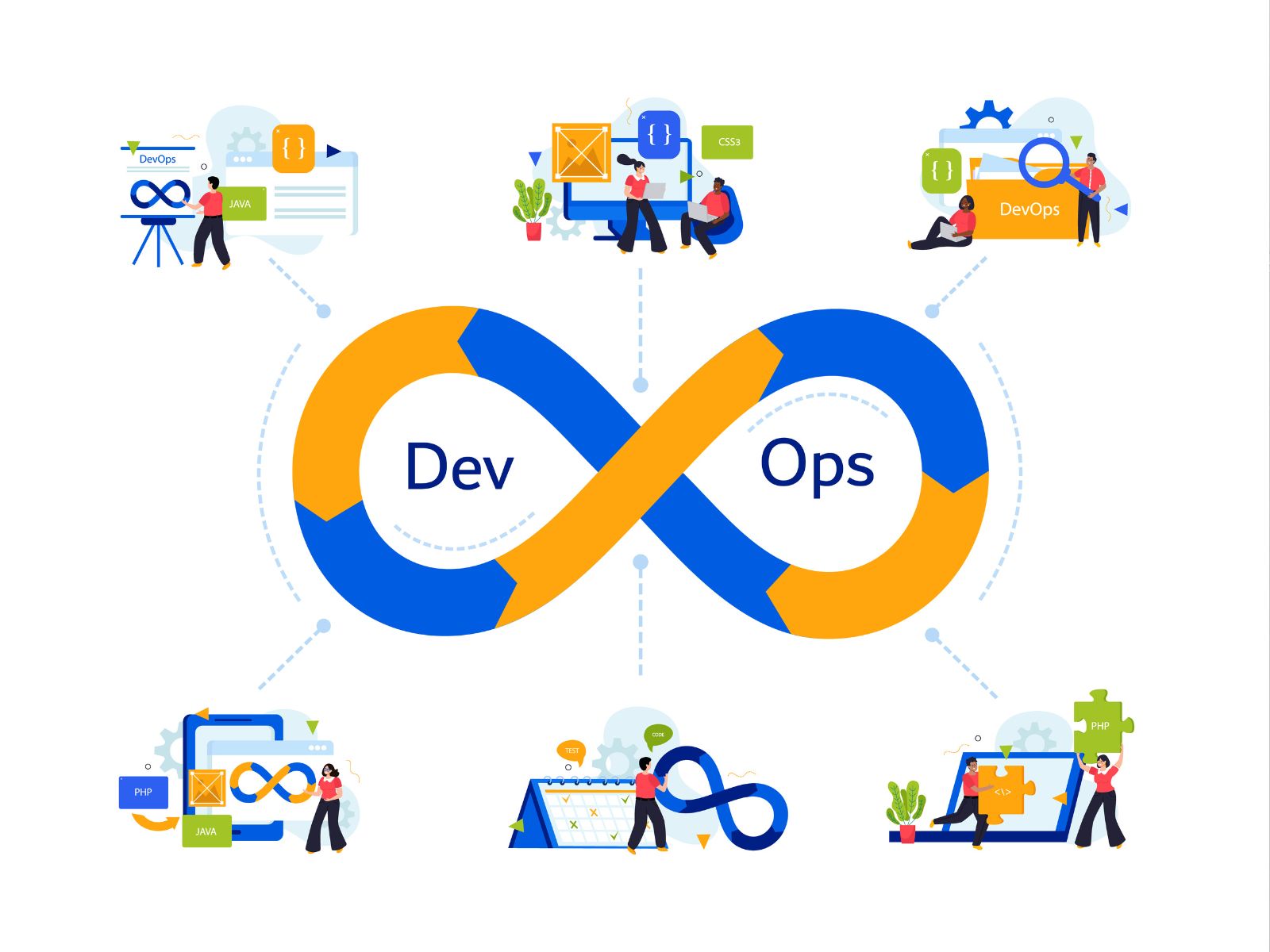
DevOps &
Architecture
Welcome to the cloud. Whether your organisation has fully embraced the cloud, is part way there, or is planning to catch up in the near future, cloud adoption is no longer a question of ‘if’ but ‘when’. From cloud migration to becoming cloud native and building a Cloud Centre of Excellence, Mobilise can realise your cloud journey.
We Develop
Cloud Centres Of Excellence (CCOE)
Our work speaks for itself. Just look at the state-of-the-art CCOE we built for the DVLA. With over 5,000 employees and £9 billion in annual revenue, the DVLA trusted us to support their transformation journey to a cloud-based service.
With Mobilise, the DVLA’s agile project teams can now develop and launch new services quickly and at a lower cost than before. There has been a reduction in the DVLA’s delivery time for new services from an average of 400 days to as little as 30 days. For example, the DVLA released a new service that enabled users to change an address on the vehicle logbook or apply for a duplicate logbook in just 7 weeks. Now users receive documents instantly, instead of waiting 4–6 weeks under the previous system.
“Initiating the cloud migration project took work”, says Louise Pierpoint, Cloud Engineering Project Manager at the DVLA. “Stakeholders had to be convinced of the potential of the transformation, a transformation would not just change the technology; it would also change the culture and organisation of our IT Services”.
Working with Mobilise the DVLA achieved a new service delivery time improvement from an average of 400 days to as little as 30 days.
“Cloud native technologies empower organisations to build and run scalable applications in modern, dynamic environments…combined with robust automation, they allow engineers to make high-impact changes frequently, and predictably with minimal toil”
– James Carnie, CTO, CISSP, CITP
We Integrate
Architecture & DevOps
Working with the Home Office, Mobilise architects engaged 50+ stakeholders across HO, Police, Cybersecurity, Border Force, and external Government departments to provide a technical assessment of capabilities, technologies, tooling, and strategy.
Collaborating with HO, Mobilise architects performed gap analysis against industry standards to develop requirements that mature technologies and processes.
We understand that DevOps is more than just a set of tools and techniques. That’s why our offerings are powered by our team of expert DevOps practitioners. They will enable your organisation to meet the ever-changing demands of digital transformation rapidly and efficiently.
DevOps helps organisations to deliver fast time-to-market, increased reliability, and seamless collaboration across teams. Scale with less fuss.

Leading Partnerships
We offer cutting-edge Cloud Architecture and DevOps capabilities, and our experts can streamline your digital projects so that you can stay ahead of the curve. We have a wealth of experience in gaining best value from IT infrastructure provision and have partnered with the leading cloud providers including Amazon Web Services and Microsoft Azure to ensure a range of industry leading options are available.
Although the appetite to move to the cloud is strong, many organisations do not have the resources in their existing IT departments. 87%* of organisations strongly consider using an outsourced supplier. Replace IT infrastructure with the ‘right cloud’ service, and delivery ongoing IT transformation at pace.
Mobilise want you to know your cloud technology. We enable your teams to adapt to new IT systems and processes with our Knowledge Transfer Framework and upskilling know-how.
*Mobilise commissioned research
Experts in Cloud Architecture & CCOE
Companies across the UK are embracing the cloud in large numbers.
Whether you’re looking to migrate to the cloud, optimise your existing cloud infrastructure, or simply need help navigating the ever-changing landscape of cloud technology, our cloud natives have you covered.
Migrating to the cloud is only the first step in the cloud transformation journey. To take it further a Cloud Centre of Excellence (CCOE) needs to grow. A CCOE is the engine inside your organisation that allows you to become cloud native.
This means creating a team which is responsible for developing a framework for the organisation’s cloud operations, governing the IT infrastructure, and building out best practices. Our experts will work closely with you to define your digital goals and provide a robust, scalable, and secure infrastructure.

1. Set out your vision
2. Stabilise and standardise
3. Prototype
4. Migrate
5. Optimise
6. Transform
7. Educate
Steps To
CCOE Success
Cloud Native technologies are modular and less complex to maintain. The result are systems that are better performing, agile, and lower in cost.
The key to success is following best practice, proper training, and time management. It also helps to have the guidance of an experienced partner to create the required cloud operating model.
Mobilise helps organisations ensure that their cloud transformation is a success from strategy through to design, delivery, and organisational and operational change.
“If you migrate to the cloud, you’ve got to take your employees with you on that journey. It’s vital that you take a proactive and ongoing approach towards training your employees - while some companies are clearly doing that, a worryingly higher number are failing to realize the full potential of devoting proper resources to employee training.”
James Carnie, Co-founder & CTO

DevOps
DevOps is a core component of successful cloud transformation.
Our DevOps capabilities work to your requirements, delivering fast time-to-market, increased reliability, and seamless collaboration across teams and transformation projects.
We understand that DevOps is more than just a set of tools and techniques. That’s why our offerings are powered by our team of expert DevOps practitioners. They will enable your organisation to meet the ever-changing demands of digital transformation rapidly and efficiently.
In the world of cloud computing, DevOps helps organisations to quickly and easily scale their infrastructure to meet their demands.

Fast-growing specialist lender Hodge Bank embarked on a digital transformation to increase the scale of the business and reach new customers.
Hodge Bank had limited internal Cloud and DevOps skills and needed a partner who could enable the internal team while providing support for a complex environment 24×7. Security was a critical factor as Hodge Bank is regulated by the Financial Conduct Authority (FCA). We helped them demonstrate a fully compliant platform with all relevant security areas considered and addressed.
- Mobilise helped Hodge secure the following results:
- A secure cloud environment, with DevOps tooling, able to cope with a huge scale without intervention.
- A solution meeting design best practice, signed off by Mobilise AWS Certified Architects.
- An enabled team, with fully documented designs and skill transfer.
- Ongoing flexible 24×7 support to ensure any unexpected issues are managed day or night, integrated with customer internal support infrastructure to provide a seamless service.


We have proudly supported the Home Office in driving digital transformation and cloud modernisation in their infrastructure projects.
Leveraging our deep expertise in Cloud Architecture and DevOps, we offer a comprehensive and integrated service that will help you stay ahead and achieve your strategic goals. Whether you’re looking to transform your cloud strategy, streamline your DevOps processes, or build a new application, we have the expertise and experience to help you succeed.
We are proud to help organisations reach their strategic goals.
Under the guidance of Mobilise architects, our DevOps engineers were embedded within HO product teams. We worked side by side with HO to re-shape their organisational landscape towards their more product centric goal. Our experts built engineering capability, guided the transition towards agile ways of working, and coached layers of management throughout the journey.
They were an on-hand knowledge base, introducing multiple communities of practice and assisting internal resources while they moved into their roles and built expertise. This is our proven track record of success.